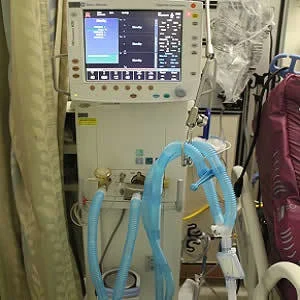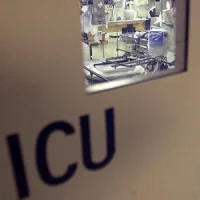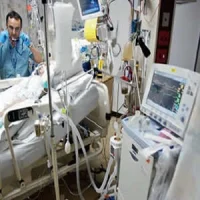A review paper published in the journal Critical Care discusses current problems associated with mechanical ventilation and some important suggestions to improve future care. The review focuses primarily on limiting tissue damage, thereby improving the safety of artificial ventilation.
Also, authors say they limited their analysis to acute respiratory distress syndrome (ARDS) patients, who are among the most problematic to manage among the mechanically ventilated patients. The adverse effects of mechanical ventilation in ARDS arise from two main causes: unphysiological increases of transpulmonary pressure and unphysiological increases/decreases of pleural pressure during positive or negative pressure ventilation. The transpulmonary pressure-related side effects primarily account for ventilator-induced lung injury (VILI) while the pleural pressure-related side effects are responsible for haemodynamic alterations.
Although most of the studies dealing with VILI concentrate on the static components of the breath (tidal volume, plateau pressure, and positive end-expiratory pressure [PEEP]), other important factors should not be ignored, according to the authors. "The most relevant, in our opinion, are the respiratory rate (i.e., how many times per minute a potential volutrauma or barotrauma is delivered) and the inspiratory flow rate (i.e., how fast a potential volutrauma or barotrauma is applied)," they say.
The term "volutrauma" refers to excessive strain, while "barotrauma" refers to excessive stress. Strains exceeding 1.5, corresponding to a stress above ~20 cmH2O in humans, are severely damaging in experimental animals, the authors note.
To minimise adverse interactions between lung pathology and ventilatory settings that promote VILI requires two distinct strategies, according to the authors. "On one side, decreasing the inspiratory (and possibly the expiratory) mechanical power and damaging strain should decrease VILI; and on the other, steps to increase lung homogeneity should decrease the likelihood of injury." The best available manoeuvre to encourage mechanical homogeneity, supported by solid pathophysiological background and proven clinical results, is prone positioning for those patients in whom inhomogeneity is prevalent (moderate-severe and severe ARDS), the authors add.
In conclusion, the paper says a possible pathway towards "improved" mechanical ventilation for a future patient would consist of the following steps:
- Define excessive strain and mechanical power, normalised for lung volume.
- Measure/estimate lung inhomogeneity to assess the prevalence of stress raisers and the distribution of mechanical power/stress–strain.
- Determine whether a given ventilatory set applied to the lung parenchyma of which the mechanical characteristics are known is associated with risk of VILI and how much.
- If a mechanical ventilation set cannot be found to avoid an excessive risk of VILI, alternative methods (as the artificial lung) should be considered.
Source: Critical Care
Image Credit: Quinn Dombrowski










